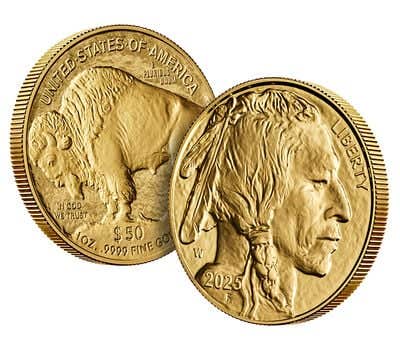Viewpoint: What in a coin most appeals to you?
I fondly remember the glass dish of jellybeans that my grandmother would offer me during summer visits. “Do you like the red ones or the green ones?” It was a simple choice; I liked the bold flavor of the red ones. They were easily the best.
I fondly remember the glass dish of jellybeans that my grandmother would offer me during summer visits. “Do you like the red ones or the green ones?” It was a simple choice; I liked the bold flavor of the red ones. They were easily the best.
Today, I shop for jellybeans at a large grocery, but I am not so sure which to choose. There are so many red ones: cherry, apple, watermelon. I want the best, but I am overwhelmed by choices.
Choosing the right coin for my collection has also become overwhelming. With so many coins in the marketplace, it is difficult to know when you have identified the best one. How do know when you have found it? What if a better one comes on the market tomorrow?
Back when I collected coins out of pocket change, I took what could be found. I was happy with any date and mintmark combination that was missing from my folder. If a better specimen came along, I gleefully traded up and spent the crusty one.
The elusive coins that taunted me as I contemplated the holes in my folder could often be found at the neighborhood coin shop. Again, there were only a few to choose from. Did I want the 1932-D quarter in fine or very fine? Most of the time, I opted for the better one. On a few occasions, the fine one was good enough.
My, how things have changed! There are more choices than all the jellybeans in the world, and no limit of expert opinions about how to make the best coin choices.
This should be a good thing. The Internet allows the collector from Tinytown, U.S.A., to examine and select from hundreds of coins. We are no longer limited to what is available at the local coin shop. In fact, most of these shops are closed. Consequently, we can buy the 1932-D quarter of our dreams with a click of the mouse. It’s easy as buying a Whopper with fries.
This “fast-food” numismatic marketplace has an unhealthy downside. First off, we are compelled to shop around longer than is necessary or comfortable. The problem with choosing between so many coins in pleasing grades is that we do not know when to stop. A better coin could be just around the corner, so we keep looking. Consequently, the hunt is prolonged, and becomes less satisfying, more about trying to maximize our purchase than the search itself.
Psychologists suggest that shoppers invite frustration when they adapt a maximizing strategy. Put another way, collecting can be anxiety provoking when the choices are many, because you are compelled to compare them all. What if you chose a coin today, only to regret the purchase tomorrow when a better one is discovered?
A second factor inflames this predicament further; the obsessive emphasis on condition grading and market value. While we salute the adage “buy the best coin that you can afford,” we have taken this advice to the extreme. Investment concerns have usurped the enjoyment of completing our sets. Consequently, anxiety regarding third party grading has become hypertensive. There is urgency in the air that exaggerates our fears of losing money and being duped. In fact, several collectors have written to Numismatic News, angrily announcing that they are leaving the hobby because they did not reap the financial rewards they expected after decades of collecting.
A third factor adds fuel to our discontent, the pressure to be a “smart numismatist.” Collecting-investing has become reigning model for coin collecting. As such, some collectors feel a bit embarrassed when they purchase wholesome, but circulated, coins to fill their coin folders. So-called “collector coins” have become synonymous with “junk,” derided as the bric-a-brac of numismatics bound for the melting pot.
The pressure to buy only the best has led us to rely on professional coin graders to tell us what is worthy. Still, we find no satisfaction, because grading standards fluctuate and are not consistent across services. All of this produces anxiety. No wonder the prospect of acquiring a less than perfect coin can seem catastrophic.
Too many red jellybeans to choose from!
I find it simultaneously amusing and disconcerting to hear experts tell us to look at the coin, not what is printed on the holder. This advice should be so obvious as not to need mention. Yet, the drive to compare available choices, to avoid making catastrophic mistakes, propels us into reading labels instead of looking at coins.
Years ago, at the coin shop, we did look. We may have chosen the fine over the very fine for good reasons, perhaps the fine quarter was fully struck, whereas the “better” coin was flat as a pancake. Seasoned collectors know that eye appeal is not the same as condition grade. How easily we forget.
How can we regain our composure and reduce our blood pressure? The answer starts with you.
You should consider what you want in a coin. This requires that you develop your eye. Go ahead and examine many coins. Ask yourself what a satisfying coin looks like. Perhaps you already have a nice specimen that represents what you are looking for. A nicely matched set of coins is pleasing to look at, and offers plenty of challenge resulting in a set to be proud of. The key is to base your decision on what you see in front of you, not on some grade level or the opinion of others.
When you really think about it, condition grading and market value are just tools to help you obtain what you want, and estimate how much you will have to pay to get it. Too often we worry about what others think. Having a clear idea of what you are looking for allows you to sidestep the absurd quest to find the “best.” Stop looking when you find a coin that fits your selection criteria. Not only will this prompt you to look at the coins, not the holders, but also it assures that you focus on getting exactly what you want.
Life is too short to allow buyer’s remorse to intrude on your collecting. Limit your choices to a manageable level. Yes, patience is important, but do not become a maximizer at the expense of your enjoyment. Just be aware that the character of today’s numismatic marketplace promotes this unhealthy attitude. Coins have become commodities, and everyone is trying to make a buck. For the collector, buying coins should be fun, not strenuous. Choose what you like: I chose the watermelon jellybeans and never looked back!
This Viewpoint was written by Michael S. Shutty Jr. a hobbyist from Middlebrook, Va. Viewpoint is a forum for the expression of opinion on a variety of numismatic subjects. The opinions expressed here are not necessarily those of Numismatic News.
To have your opinion considered for Viewpoint, write to David C. Harper, Editor, Numismatic News, 700 E. State St., Iola, WI 54990. Send email to david.harper@fwmedia.com.
More Coin Collecting Resources:
• Subscribe to our Coin Price Guide, buy Coin Books & Coin Folders and join the NumisMaster VIP Program









